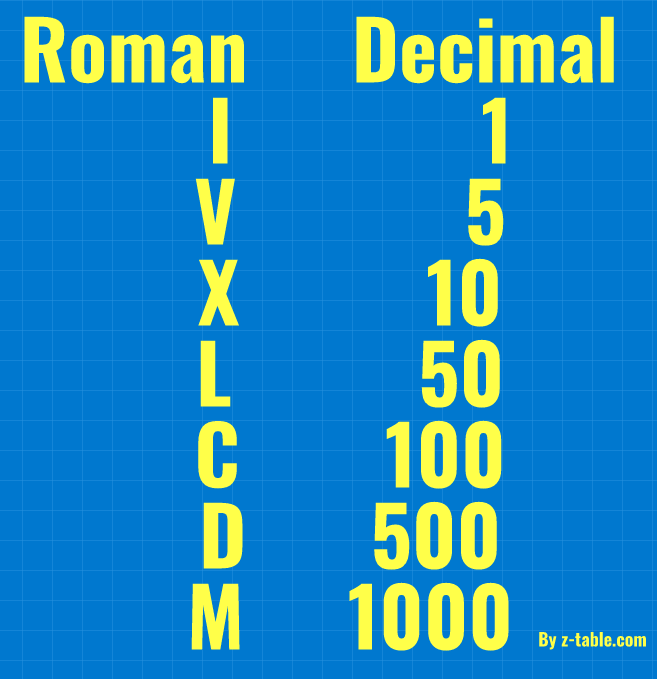What is CC in Roman Numerals?
CC is a representation within the Roman numeral system corresponding to the Arabic number 200. The numeral is formed by repeating the Roman numeral C (100) twice. By placing these symbols sequentially, CC is created, representing 100 + 100 = 200. In this article, we will uncover the formation, foundational principles, and some noteworthy aspects of CC in the realm of Roman numerals.
Sometimes conversion of Roman Numerals can be a daunting task, especially for larger numbers. You can always use a Roman numerals converter if you need to quickly convert Roman numerals to decimal numbers .
Sometimes conversion of Roman Numerals can be a daunting task, especially for larger numbers. You can always use a Roman numerals converter if you need to quickly convert Roman numerals to decimal numbers .
Composing CC in Roman Numerals
Expressing the number 200 using Roman numerals involves the repetition of the symbol C (100) twice. When placed together, these symbols result in the numeral CC.
| Roman Numeral | Value |
|---|---|
| I | 1 |
| V | 5 |
| X | 10 |
| L | 50 |
| C | 100 |
| D | 500 |
| M | 1000 |
Key Principles for Writing Roman Numerals
To understand and compose Roman numerals effectively, one must grasp the core principles. Here are the main tenets:
- Addition: When a numeral of larger value precedes one of smaller value, the values are additive. For CC, this is demonstrated with C + C = 100 + 100 = 200.
- Subtraction: If a numeral of lesser value is positioned before a larger numeral, subtraction is suggested. However, this principle doesn't apply in the case of CC.
- Repetition: To increment its value, a numeral can be reiterated up to three consecutive times.
- Limit on Repetition: As a traditional guideline, a numeral shouldn't be repeated more than three times in a row.
Numbers Related to CC in Roman Numerals
For a broader perspective, consider the numerals flanking CC:
- CXCIX = 199
- CC = 200
- CCI = 201
CC Roman Numerals Trivia
- The number 200, denoted by CC, is an even number.
- 200 holds specific prominence in various disciplines and contexts, given its rounded nature and its relationships to other numbers.
Problem Examples for CC Roman Numerals
Addition: What is CC combined with X?
Answer: CC (200) + X (10) = CCX (210).
Subtraction: How much do you get when C is subtracted from CC?
Answer: CC (200) - C (100) = C (100).
Multiplication: When CC is multiplied by III, what's the result?
Answer: CC (200) * III (3) = DCCC (600).
Division: What is the quotient when CC is divided by II?
Answer: CC (200) ÷ II (2) = C (100).
Answer: CC (200) + X (10) = CCX (210).
Subtraction: How much do you get when C is subtracted from CC?
Answer: CC (200) - C (100) = C (100).
Multiplication: When CC is multiplied by III, what's the result?
Answer: CC (200) * III (3) = DCCC (600).
Division: What is the quotient when CC is divided by II?
Answer: CC (200) ÷ II (2) = C (100).
CC Roman Numerals FAQs
How is CC represented in lowercase Roman numerals?
Answer: In lowercase form, CC is denoted as cc.
Is there another Roman numeral representation for the number 200 apart from CC?
Answer: No, CC is the sole representation for 200 in Roman numerals.
Which Arabic numeral corresponds to CC?
Answer: CC signifies the number 200.
How can one effortlessly identify the Arabic representation of CC?
Answer: Simply by understanding the value of the Roman symbols in CC, one can directly ascertain its value of 200.
Answer: In lowercase form, CC is denoted as cc.
Is there another Roman numeral representation for the number 200 apart from CC?
Answer: No, CC is the sole representation for 200 in Roman numerals.
Which Arabic numeral corresponds to CC?
Answer: CC signifies the number 200.
How can one effortlessly identify the Arabic representation of CC?
Answer: Simply by understanding the value of the Roman symbols in CC, one can directly ascertain its value of 200.
CC is an emblematic representation in the Roman numeral system, manifesting the system's structured and logical approach. Through its unique combination of symbols, CC conveys a distinct numerical value, highlighting the intricacies of this ancient numbering technique. As we delve into the numeral CC, we recognize the profound interconnectedness of history, culture, and mathematics, offering a window into the past while providing relevance in contemporary numerical contexts.
To learn more about Roman numerals visit our comprehensive Roman numerals guide. For any other math and statistics related resources check out z-table.com.
To learn more about Roman numerals visit our comprehensive Roman numerals guide. For any other math and statistics related resources check out z-table.com.

